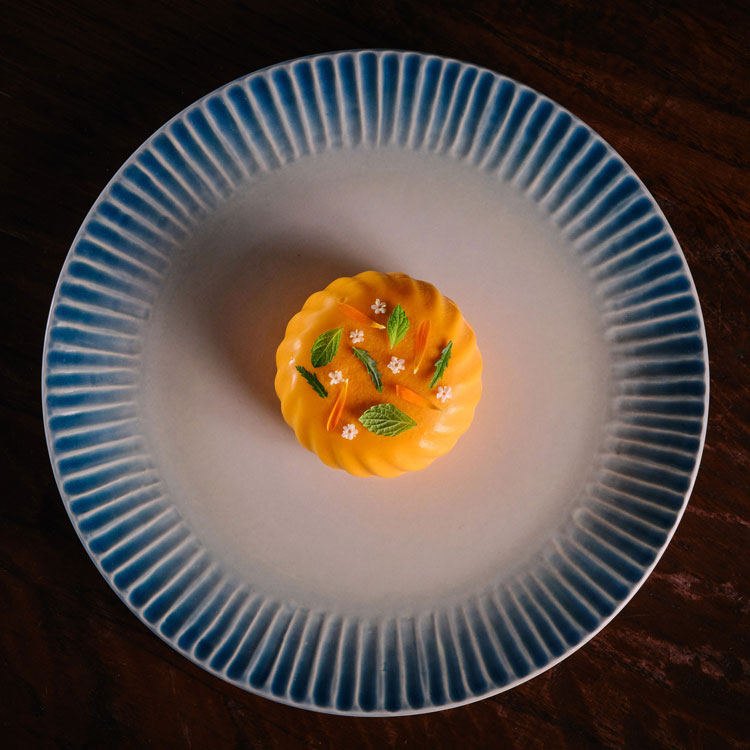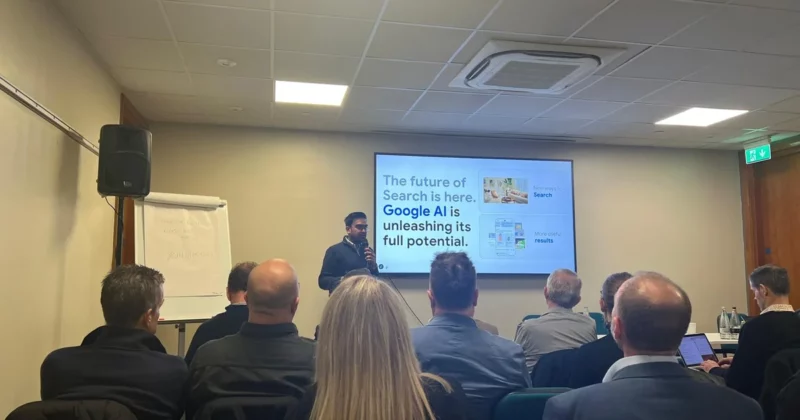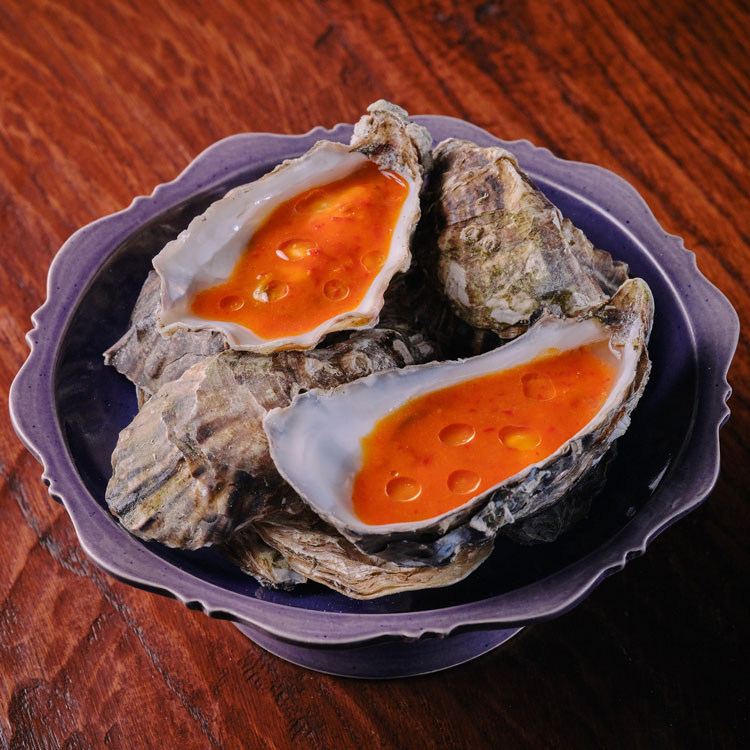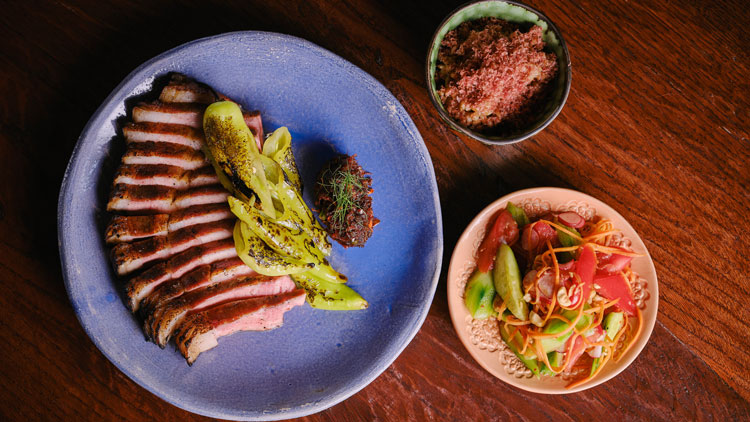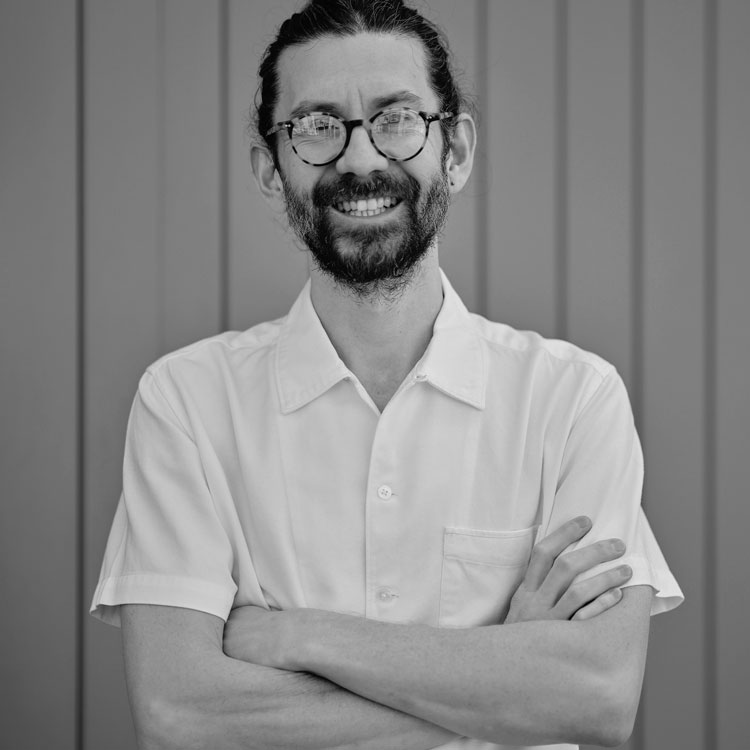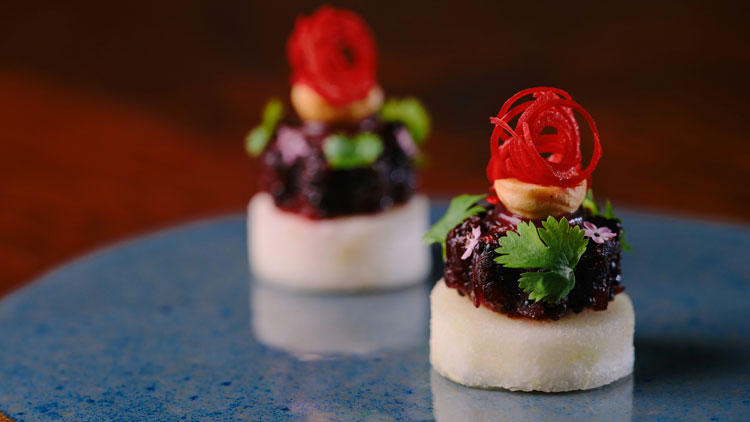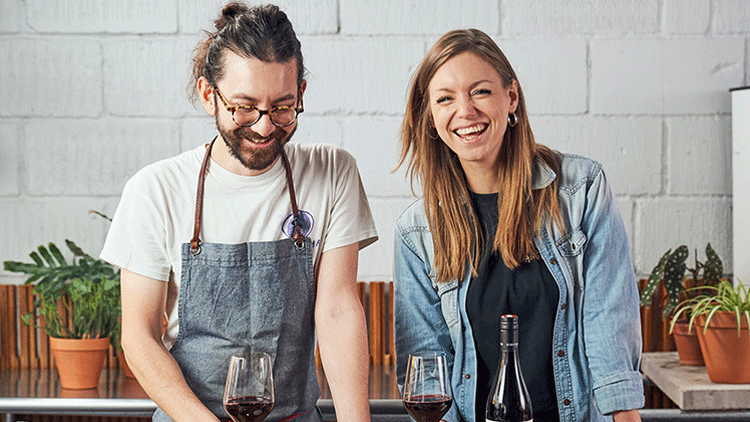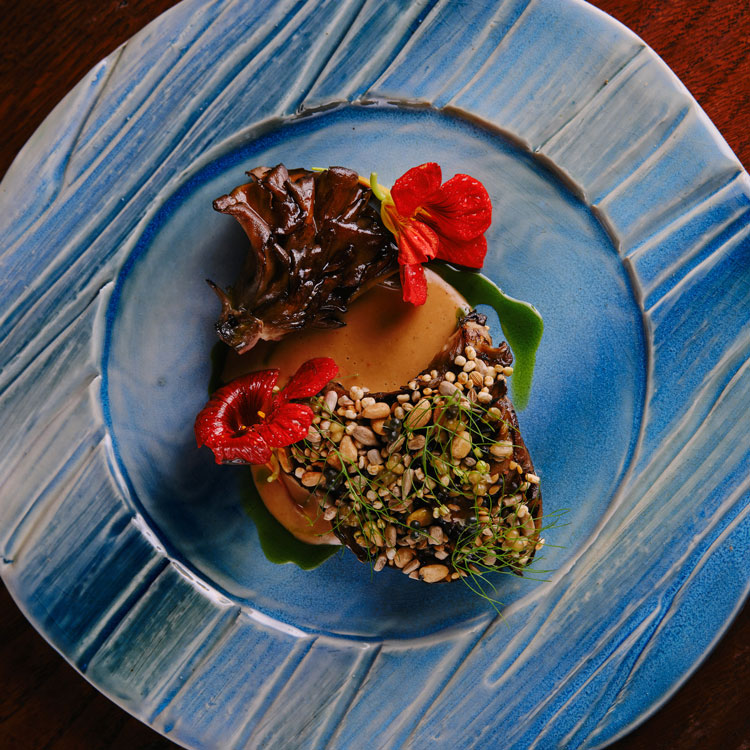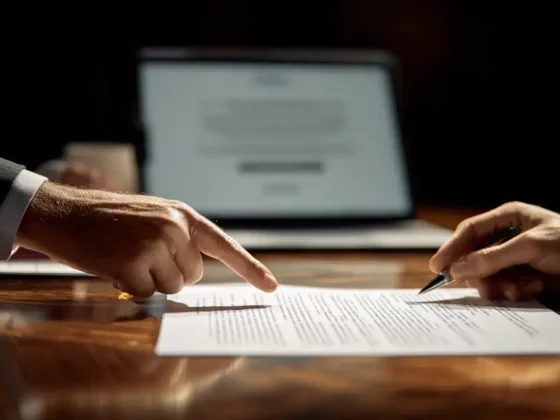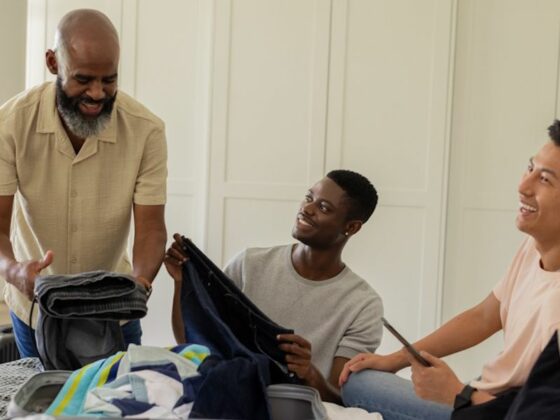London might just be the best place in the world for Thai food outside of its country of origin. The likes of Kiln, Smoking Goat, Singburi, Som Saa and Plaza Khao Gaeng all approach the cuisine from different angles but share a common thread in their commitment to authentic flavours and respect for their source material.
Next week (11 November) another restaurant will join what is now a lengthy list of great places to eat Thai food as John and Desiree Chantarasak launch AngloThai in Marylebone. The restaurant – which explores John’s Thai-British heritage with its thoughtful menu of reassuringly punchy modern Thai cuisine – has been a long time coming having started life as a pop-up just ahead of the pandemic.
The couple have spent the past five years or so refining the concept over further pop-ups and residencies – the most recent and high-profile being at 180 The Strand’s Outcrop last summer – and within their Battersea home.
“Restaurants are a lifestyle,” says Desiree, who manages the front of house and wine side of the project with John overseeing the cooking. “We have been living and breathing this for a long time.”
We’re sitting in their dining room, which was until recently used for their regular Baan dinner series (bān being the Thai word for home). Created by Desiree herself – a graphic designer by trade – posters from AngloThai’s many projects line the walls along with an impressive collection of cookbooks that includes John’s own Kin Thai, a shelf full of intriguing pickles, ferments and vinegars and a fancy temperature-controlled wine cabinet.
“I remember struggling to squeeze round the table to serve people when I was pregnant. It’s truly a family business in that sense,” continues Desiree, who is holding the most recent addition to the Chantarasak clan in her arms (their three-year-old is at nursery).
Just up from Marble Arch on Seymour Place, the permanent iteration of AngloThai is intended to evoke the feeling of being in a family home. Conceived by Thai-American designer May Redding, the 50-cover space is inspired by Thailand’s contemporary design movement. “Mine and Desiree’s stamp on it can be felt throughout. It will be like coming into a well-loved home,” says John.
Fifth time lucky
The pair have been in an on-off relationship with MJMK founders Jake Kasumov and Marco Mendes since 2020 having been introduced to them by KOL chef Santiago Lastra. Much like KOL – which is also backed by MJMK – AngloThai’s debut bricks and mortar restaurant has had an unusually long gestation period.
The pair have ‘gone the distance’ on no less than five sites over the past few years with one site so close to going ahead that a press release was issued (the deal collapsed due to spiraling costs associated with the development of the Fitzrovia site).
“We worked on that one for over a year. To walk away was demoralising but it was definitely the right thing to do,” says John, who is sanguine about what must have been a frustrating period for the pair.
“The delay has allowed us to get to know Jake and Marco,” he continues. “We trust them, and they have taught us a lot about hospitality. Originally, we were looking at opening a low-key wine bar in Battersea. They have encouraged us to think bigger and build a proper team around us. It has been a long journey, but the food is in a much better place now as are we as people. We have more to offer now than we did four years ago.”
Subbing in UK produce
The term AngloThai was coined by Nicholas Balfe, then at Brixton restaurant Salon but now at his Somerset restaurant Holm, in 2015 when John was working the pop-up circuit during the gap between Som Saa’s Climpson’s Arch residency and the launch of its permanent iteration just south of Spitalfields.
Like most ambitious chefs cooking Thai food then, John was importing most of the building blocks of the cuisine from outside Europe and not really thinking anything of it.
“Nic is very in touch with UK seasonal produce. He turned my head by talking about alternatives, for example what I could use as a souring agent in replacement of lime or tamarind. We played around a bit and eventually he said something like ‘this is hashtag Anglo-Thai’,” says John, who not so long later asked Balfe’s permission to use the term as an overarching name for his pop-ups.
He admits that it’s taken a while to find the right balance between reducing his reliance on imported ingredients and creating dishes that are coherent and authentic. “I went down a bit of a wormhole with it. Initially, we looked to turn Thai food on its head by using alternative produce. We still do a lot of that, but these days we don’t put quite so many shackles on ourselves.”
A Thai restaurant that doesn’t serve rice
What this means in practice is a sourcing policy that is – on first inspection, inconsistent. For example, John does not serve rice with any of his dishes, often ‘representing it’ it with a nutty-tasting mixture of UK-sourced heritage grains. Similarly, palm sugar is swapped out for an artisan British honey – John says it has a remarkably similar flavour profile to the artisanal palm sugar from Thailand – and an array of British-grown ingredients are used in place of lime and tamarind including sea buckthorn, rhubarb and under ripe gooseberries.
But AngloThai will continue to crack coconuts from Southeast Asia to produce coconut cream, an indispensable ingredient in much of Thailand’s cuisine, having abandoned plans to make a milk from some sort of British pulse to use as an alternative. “We don’t want things to get weird and we certainly don’t want to lose sight of making delicious food.”
To this end the kitchen will also continue to import things like fresh galangal, lime leaves, lemongrass and chilies as well as fermented products including shrimp paste, fish sauce and soy sauce.
But AngloThai now having a permanent space will allow the team to gradually reduce its reliance on Asia-sourced ingredients over the next few years.
“It is possible to grow things like chilies and galangal in the UK. We will soon start building relationships with small scale growers, even if that means putting the investment in for things like polytunnels ourselves,” says John, who will also look to make his own fermented products in house once the restaurant beds in.
Sourcing from the UK will place restrictions on the kitchen in some cases. For example, chilies will only grow in the summer here meaning that green curry, which must be made with fresh chilies, will be off the menu throughout the winter months.
“I like the idea of green curry being a summer dish, there’s a great story behind it. In the cooler months we will make massaman, panang, and red curry with the chilies we have dehydrated over summer.”
Staying true to themselves
There’s a lot more to the AngloThai concept than its ingredients. “It’s about John and his heritage. That’s the principal influence,” says Desiree. “We’re inspired by the food of Thailand, but we don’t serve authentic Thai cuisine.”
“But the flavours are authentic, and the food is authentic to us,” interjects John. “We no longer use certain Thai words or descriptors on the menu because it doesn’t make sense for us to call a som tam a salad if it doesn’t have green papaya in it. The last thing I want is for people to be misled by our messaging, especially Thai people.”
In general, the dishes on AngloThai’s 20-or-so item menu are original creations in the sense that they are not renditions of established Thai dishes (with the possible exception of curries) although some dishes are inspired by classic Thai dishes and or flavour combinations.
Presented simply on a single sheet of A4, the menu is divided into snacks, smaller plates, main courses, dishes designed to share, sides and desserts. Smaller items include raw venison, chilli jam and smoked scallop roe; cuttlefish bun, heritage seeds and black garlic; and a £35 combo of Brixham crab, Exmoor Caviar and coconut ash cracker.
Larger options take in Blythburgh pork chop, pork fat and smoked chilli relish; Crown Prince squash and roasted coconut curry; Cornish monkfish, jungle curry and holy basil; and Wexford County ribeye, smoked butter and salted plum. The latter two are charged by weight, priced at £17 and £16 for 100g respectively. A ‘chef’s selection menu’ that features a selection of dishes from the a la carte and a few bonus ‘off menu’ items is also available for £75.
John and Desiree had always intended to launch AngloThai as a tasting menu-only restaurant but had a major rethink following their residency at 180 The Strand.
“I created a few hundred dishes during that time and realised that what the team enjoy and where our strengths lie is being creative with produce that has just come through the door on the fly,” John says. “On top of that, developing and constantly executing a tasting menu can be quite dull.”
“What we want from a restaurant has changed since we have had children.” Desiree adds. “We want the restaurant to have a neighbourhood feel and for people to be able to pop in for a glass of wine and a few plates.”
Bangkok summers
John was born in Liverpool to a Thai father and an English mother, but the family later moved to the Wye Valley in Wales where he would spend the majority of his childhood. Each summer, there was a trip to Bangkok to his father’s family home in the now upmarket suburb of Thong-Lor.
“Food was a big deal. When we were having breakfast we’d talk about what we were going to have for lunch and at lunch we’d talk about what we were going to have for dinner,” says John, who despite having a far more enterprising diet at home than the average British kid – his mother cooked a lot of Asian dishes from scratch, mostly Thai and Indian – was taken aback by the powerful flavours and sheer variety of Thai cuisine in situ.
“It was a bit intimidating at times,” he admits. “My grandmother was an amazing cook (and not one to pull punches, it seems). The Thai side of my family is originally from China, so we ate a lot of wok-cooked dishes that had influences from both countries. The dish I remember the most clearly is kao kluk gapi (rice stir-fried with shrimp paste) that’s served with all sorts of different embellishments including candied pork belly in soy sauce, fresh vegetables, fruits and herbs.”
Coming to cooking late on
Despite this early initiation into bracingly authentic Thai cuisine John came into cooking relatively late on in his mid-twenties after studying economics at Bristol University and pursuing a career in music.
“I was in an indie band. We did okay and there was a hope we might make it big. We moved to London and took menial jobs to enable us to focus on gigging but after a few years it became clear that it wasn’t going to happen for us.”
Unsure what to do next, John went on a road trip around the US in which his interest in food and drink became even more intense. Upon his return to the UK, a serendipitous encounter with a Thai-born uni mate saw him pretty much immediately back his bags once again to jet off to Thailand to study for a diploma in classical French cookery at the then brand new Le Cordon Bleu Dusit in Bangkok.
One thing led to another, and he ended up in the kitchen at Nahm cooking under David Thompson. “I thought I knew quite a lot about cooking but – as it turned out – when I stepped into a proper Thai kitchen I didn’t know my arse from my elbow,” he recalls. “It was like starting all over again.”
Cooking alongside the godfather of Thai cuisine (in the Western world, at least) was a pivotal moment in John’s career, prompting him to take both his cooking and his exploration of his Thai heritage more seriously, including signing up to Thai language classes.
Friends in Thai places
Serendipity struck again when John looked to return to the UK in 2015. Nahm alumni Andy Oliver and Mark Dobbie were in the process of setting up the first iteration of Som Saa in Hackney’s Climpson’s Arch (the space is now home to Tomos Parry’s Brat) and were looking for chefs.
“David put me in touch with them. I didn’t have much experience, but I had a mature head on my shoulders. It was my last roll of the dice in terms of doing something creative before I fell back on my economics degree and disappeared into The City.”
It was at Climpson’s Arch that John met his future wife. “It was a chance invite to a cool new pop up in East London,” Desiree says, who was working as a graphic designer at Amazon at the time.
“I did the one thing you’re not supposed to do and hit on a guest,” says John, who stayed with Oliver and Dobbie for five years. “It was the most fun I’ve had in the industry. It was exactly the right time for that sort of restaurant.”
With time on her hands while John was working, Desiree signed up for WSET courses to explore her nascent interest in wine.
“It can be lonely being with a chef that is working long hours when you have a normal 9-5. I needed a hobby,” she says. “I ended up getting a job in a wine bar (D Vine Cellars in Clapham, not too far from the couple’s home). I completely caught the hospitality bug. It was such a welcoming world.”
Avoiding being pigeonholed
Desiree journey into the wine world roughly coincided with the rise of low-intervention wine in London. Natural wine has consequently been a big part of AngloThai’s story with the pair having worked closely with key importers such as Modal Wines and Newcomer Wines since the very beginning (the first AngloThai residency they oversaw together was hosted at the latter during Eat Out To Help Out).
Going permanent in Marylebone will see the Chantarasaks move away from their roots as they seek to distance themselves from a term that has become both misunderstood and divisive.
“It’s not that we disagree with terms like natural and low-intervention – quite the opposite. But they have negative connotations around them now,” says John, apparently mindful that the post code isn’t exactly a hotspot for the stuff.
Producers associated with the movement will still feature on AngloThai’s exclusively European list but more – for want of a better term – classical labels will also be available, especially at the premium end.
“Our tastes have changed over the years too,” Desiree says. “We drink more conventionally made wines than we used to. Plus, a lot of the producers we championed during the early days of AngloThai have grown up with us and are now making much cleaner more stable wines. We will focus on well-crafted wines made by people that work in a sustainable way without worrying to much about labels like biodynamic.”
Launching with an initial list of around 80 bins that will be added to over time, the wine programme will have a strong bias towards cooler climate regions such as Austria and Germany, which tend to lend themselves to Thai food more than their southern European counterparts.
“We like textured aromatic whites and lighter, juicer reds,” Desiree continues. “We will also be championing a lot of English wines, and not just sparkling wine. Like the food, the wine list will have a lot of dynamism, we won’t be buying large amounts of anything.”
Around 25 wines will be available by the glass (some via Coravin) with AngloThai also offering 75ml pours.
Finally getting the doors open
AngloThai is launching into a competitive market for Thai cuisine – later this month will see Thompson finally bring his casual dining brand Long Chim to the capital – but as John rightly points out the scene offers a lot of variety.
“All the restaurants have their own style and way of doing things. This feels like the right time and place for AngloThai. Marylebone has shown itself to be a place where people are open to trying new things and a relatively high spend per head means we can use amazing produce and elevate people’s perception of Thai cuisine.”
London has just got even better for Thai food.
